The fear of removing a tooth (or teeth) is why people fear going to the dentist. Just the thought of dental extractions can induce shivers or fist-clenching in some people.
Truth be told, dental extractions are not the most pleasant experience. However, dentists prescribe the treatment when it is truly beneficial for the patient.
Dental extractions can be traced back to the 14th century, where people used dental pelicans to extract teeth. This was the only cure for diseased teeth because there were no antibiotics.
14th Century Dental Pelican versus Today’s Forceps

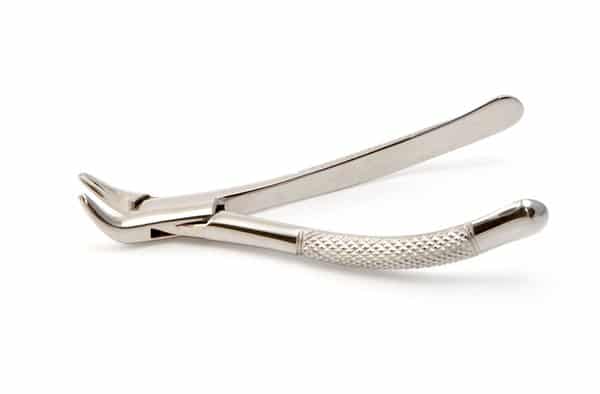
Image: 14th Century Dental Pelican versus Today’s Forceps
Today, however, early-stage tooth decay can be treated and your tooth can be saved. Dentists are not over-eager to prescribe tooth removal to patients! Dental extractions only become necessary when there is an infection that causes swellings or fever, or if teeth are not growing out properly in the dental arch.
Do I really need to pull out my teeth? Why is tooth extraction necessary?
If you’ve been recommended for a tooth extraction, chances are you have:
- An infection (tooth decay or gum disease), or
- Crowding (causing crooked teeth or impacted wisdom tooth), or
- Swelling (infection or cyst)
Read on to find out why teeth have to be removed in these cases.
1. If you have extensive tooth decay or gum disease
Tooth Decay
Tooth decay is the softening of your tooth enamel when acid caused by bacteria eats away your tooth. The decay can progress near your dental pulp, causing a tooth infection. Dental pulp is the group of blood vessels and nerve vessels inside the tooth that keeps it alive.
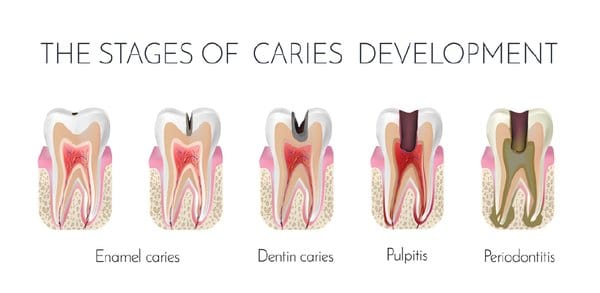
When the dental pulp is infected, it can become irreversibly inflamed and (in most cases) eventually die. Dentists can preserve some dead teeth doing a root canal treatment to clean it, and then placing a crown over the tooth. This allows you to continue using the tooth and saves your smile!
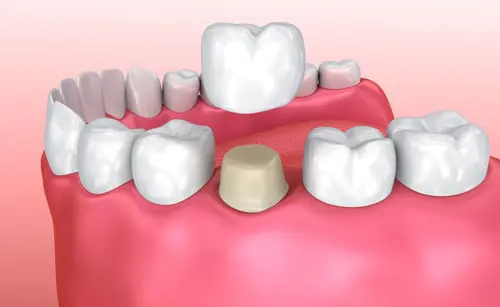
Image: A ceramic dental crown is placed over an existing tooth
However, if the tooth has broken down too severely due to tooth decay, there may not be adequate healthy tooth structure to support a dental crown. As such, your dentist will recommend for the diseased tooth to be removed instead. Then, you and your dentist will plan for a replacement (such as a dental implant, bridge, or partial dentures) at a later date.
Severe Gum Disease
Severe periodontitis is a disease of the gums (soft tissue) and bone surrounding a tooth. This is common amongst people with poor oral hygiene or patients that are medically compromised (such as undergoing medical treatments that makes one more susceptible to gum disease).
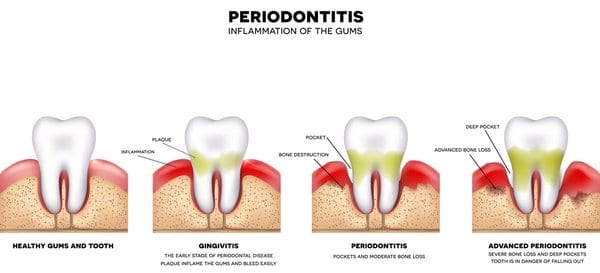
Usually, if a patient has severe periodontitis, the surrounding support decays. Thus, the tooth becomes loose and shaky. It might be difficult or even impossible to maintain cleanliness in some loose teeth, making the infection worse. In this case, we will recommend extraction of severely infected teeth to stop the disease from worsening.
2. Crowding (Too many teeth, too little space!)
Another reason to extract teeth is if there is insufficient space in your mouth to fit all your teeth properly, also known as “crowding”. If you are getting braces to straighten your teeth, or your wisdom teeth are not growing properly, you may need to remove some teeth.
Creating space for braces
If you are an adolescent, your braces specialist may have told you that you need extractions before beginning braces treatment for your crooked teeth. This is because there is not enough space for your teeth to straighten out. Your dentists will need to relieve the crowding by creating space to allow your crooked teeth to move into place and straighten up.

Image: Empty space allows surrounding teeth to move into place
To resolve impacted wisdom teeth
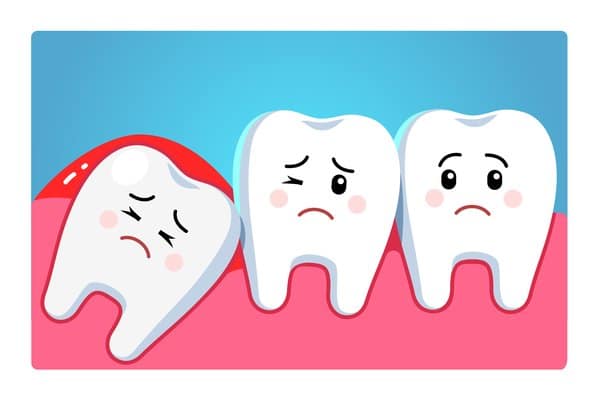
Wisdom teeth tend to come in later in life, but your mouth may not have space for the 3rd molar. In these cases, the 3rd molars may not erupt completely as there is a lack of space in the jaw. These wisdom teeth, also known as impacted wisdom teeth, may emerge partially at an angle or are fully buried under the bone.
Most young adults would be told that they have impacted wisdom teeth and would need to have them removed. However many people opt to do nothing as it does not cause pain.

Image: Wisdom tooth partially covered by gum
The impacted wisdom teeth that are partially covered by gums are most problematic as it allows food debris to get trapped underneath the gum pocket.
The trapped food debris can cause:
- A gum infection around the wisdom tooth
- Decay on the wisdom tooth
- Decay on the tooth next to the wisdom tooth
Tooth decay progresses rather painlessly at the beginning, and it could be too late to salvage the tooth by the time pain is felt. As such, dentists may recommend patients to remove their impacted wisdom teeth to prevent infection or resolve an existing infection.
3. Swelling around the teeth
Some swellings associated with teeth could be due to severe infections or are cystic in nature. To prevent the cyst or growth from recurring, the cyst and tooth are sometimes excised.
What about milk teeth? Is it necessary to extract my child’s baby teeth?

Milk teeth naturally fall out to make space for adult teeth to grow. They will become mobile (shakey), and you or your child can remove these mobile milk teeth relatively easily. If you or your child are apprehensive, we can help you remove these teeth at the dental office.

However, we may have to remove baby teeth before their natural time if the teeth are grossly carious (decayed). That is because chronic infections in diseased milk teeth can affect the growth of adult teeth underneath.
You and your dentist can plan to use space maintainers to fill the empty gaps after teeth removal. This ensures there is enough room for future adult teeth to erupt straightly into place.
What Happens During Teeth Extractions?
There are two types of teeth extractions:
- Simple Extractions: In straightforward cases, extractions are done by gradually loosening the affected tooth out of its socket using a tool such as a forceps. This form of extraction is non-surgical. Local anaesthesia is usually administered during teeth extractions.
- Surgical Extractions: In a case where teeth are severely broken down, a minor surgical procedure might be carried out to expose the tooth, divide the tooth, or remove some of the obstructing bone in order to retrieve the infected root. Impacted wisdom teeth may also require surgical extraction, as they are usually beneath the gum/bone. These procedures may require IV (intravenous) sedation to induce a state of deep relaxation.
Tooth Extraction doesn’t have to be painful

Most patients fear the prospect of extractions because they are afraid that they would experience much discomfort or pain during the treatment. However, this is not the case, since anaesthetics are administered at the surgical area prior to the surgery/ extraction. Patients may expect to hear sounds or feel some pressure, but it should not be painful.
But what if I have a phobia of teeth extractions?
How about patients who absolutely cannot tolerate the thought of being awake while the procedure is happening?
We have options to have patients undergo the extractions or surgery under sedation. That way, they will be completely asleep while the surgery is on-going. The after-effects of sedation are quite minimal, and patients recover fairly quickly as soon as the sedatives are reversed.
What are the risks of tooth extraction?
It is normal to experience minor pain, swelling, bleeding or discomfort after a tooth extraction. The area will usually take 1–2 weeks to heal over. However, if you experience signs of infection such as chills and fever, prolonged swelling at the extraction site, and vomiting or nausea, you should contact your dentist.
Is teeth extraction Medisave-claimable?
Simple extractions are not Medisave-claimable. This is because you can only use Medisave to claim for surgeries. On the other hand, if you undergo a surgical extraction, you can claim (amount subjected to approval):
- Surgical procedures,
- Pre-operative radiographs and
- Medications
Other items, such as sedation fees or extractions are not claimable and have to be paid upfront. If you have further queries about this, you can read our post on how to use Medisave for dental services.
After you’ve had a tooth pulled
How long does it take for the pain to stop after tooth extraction?
In order to manage the pain better, your doctor may have you take painkillers before the effects of anaesthesia wear off. In general, most patients experience the most discomfort on the day of the surgery or extraction. After that, the discomfort tapers off very quickly and you can resume your daily activities by the 2nd or 3rd day if there’s no swelling.
What can I do to heal smoothly after my extraction?

- Pressure: Apply pressure on the wound to encourage the clot to form and stabilise. Do not rinse, gargle or spit, as the pressure may cause the blood clot to dislodge.
- Eating: You can eat normally after the local anaesthesia wears off.
In surgical extractions, a few stitches are used to secure the surgical site. These stitches are typically resorbable. However, your dentist will require you to return in a week to review the healing and remove the stitches (since these stitches still take considerable time to dissolve).
In Summary
Both children and adults alike may require teeth extractions if benefits outweigh the cons.
- Adults may need to remove their teeth if it has become infected, or if they have crowded teeth or cysts/growths around the tooth.
- Children’s milk teeth are removed to make way for adult teeth, or extracted if infected.
You might require a simple tooth extraction or a surgical extraction depending on the situation. If you’re afraid of pain or have a phobia, you can explore our painless dentistry options such as receiving injections without a syringe, inhalational sedation (happy gas) or IV (intravenous) sedation.
After removing teeth, adults can plan for tooth replacement options such as dental implants, bridges, or dentures. On the other hand, children can have space maintainers to maintain the gap for adult teeth to grow.
If you think you might require a tooth extraction, visit our friendly dentists today at The Dental Studio for a consultation. We’re happy to discuss your concerns and options with you today to plan for a beneficial outcome.

